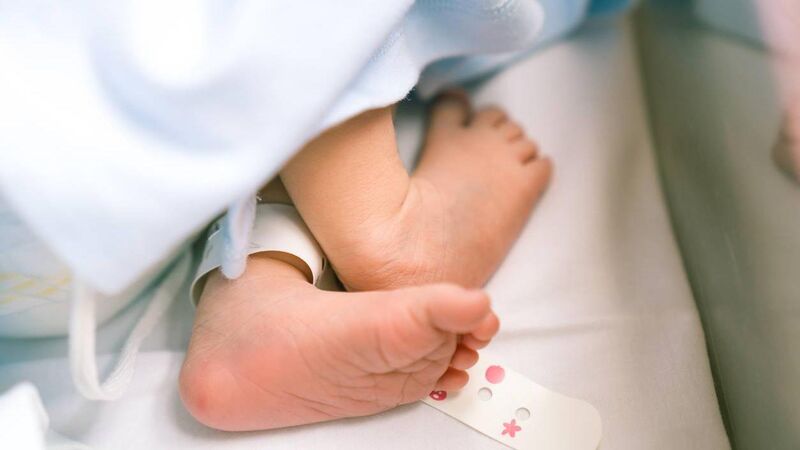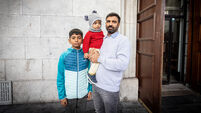Having babies later is a consequence of modern life

The Central Statistics Office (CSO) reported this week that a record number of babies were born to women over the age of 45 in 2023. File photo
Filling out the 2022 census sparked a previously dormant interest in genealogy within me.
I was newly postpartum and feeling a bit sentimental, thinking of all the mothers before me who completed their forms with a baby in arms. So, I headed to the census archives and searched for my ancestors living between Cork and Clare in the turn of the 20th century.
I would recommend this to anyone — not least to discover if your family, like mine, has been recycling the same five names for generations — but one of the most interesting things I noted was the age of some of the mothers surveyed in 1901 and 1911. Many were in their late 30s with very young children. One was 42 with a newborn baby.
This child, unsurprisingly for the time, was not the couple’s first baby. Not by a long shot, as six living children were listed. But it still seemed at odds with what we think we know of the past — a time when women married young, stayed in the home and raised their brood of children when they weren’t much older than a kid themselves.
The idea of a postpartum mum in her 40s in 1911 rural Clare seems surprising, but of course, in a time long before contraception, it can’t have been that out of the ordinary. It’s certainly not out of the ordinary in today’s Ireland.

The Central Statistics Office (CSO) reported this week that a record number of babies were born to women over the age of 45 in 2023 — 408, to be exact, representing a massive 80.5% increase since 2013. Following a similar trajectory, births by mums over the age of 40 increased by 24.7% in the same time period.
In general, the average age of mothers increased by 3.1% in a decade, up from 32.2 in 2013 to 33.2 in 2023.
Take a look at any online forum for women who are either expecting or trying to conceive, and you’ll quickly find some very outdated views on maternal age. Particularly on social media platforms based in the United States, where the average age of first-time mothers was just 27.5 as of 2023, 35 is seemingly considered totally past it.
When I was pregnant with my first child in my mid-30s, my Instagram algorithm was full of horror stories of so-called “geriatric pregnancies” and their associated risk factors. Meanwhile, I felt like a teen mum and was constantly surprised that the midwives weren’t commenting on how young I was to be having a baby.
Obviously, I was delusional, but this isn’t an unusual feeling. We are all ageing more slowly in today’s society. We spend longer in full-time education, pursuing postgraduate degrees in order to succeed in an ever-more competitive workforce.
And after all the hard graft of succeeding in this workforce, women are understandably less inclined to leave it (albeit usually temporarily) to start a family. Yes, we have careers now — and we don’t even have to give them up after we get married.
We’re meeting our life partners later — sometimes marrying them, sometimes not. But for all the flexibility and social freedoms in modern Ireland, there are major drawbacks, too — when we do decide to settle down, it is nigh on impossible to find a place to live.
It’s hardly beyond the realms of possibility to suggest that the housing crisis may have something to do with increasing maternal (and, following a similar trend, paternal) age. Who wants to start a family when they’re living in their childhood bedroom, or paying rent to a landlord who could decide to sell up before the baby starts school?
The alternative to living in the family home or renting for most young Irish people is that age old tradition of emigration. And even when people choose to return from abroad to settle in Ireland in their late 20s or early 30s, they are often effectively “starting again” in many aspects of life, kicking the notion of parenthood further down the road as they arrange jobs and accommodation.
The struggle to find childcare is another well-documented issue, and even when a suitable crèche or childminder is sourced, the cost can be daunting. Women can be keen to return to work after maternity leave — see my aforementioned point about careers — or they may simply have to, as the higher cost of living usually necessitates two pay cheques to accommodate it.
For many, the eternal childcare juggle just doesn’t seem worth it, or at least not feasible until the kind of financial security that generally (but not always) comes with age is achieved.
Although maternal age is increasing, births in general are decreasing — down by almost 20% in the decade between 2013 and 2023. At the rate we are going, we simply are not having enough babies to replace the current population.
As I think of future censuses, and imagine my own children filling them out, I wonder what kind of society they will be living in. There will be more elderly people, with future generations taking on caring responsibilities for their own parents at a younger age.
The traditional childcare safety net of grandparents will be presumably less common as my own generation will be older and potentially less physically capable of looking after young grandkids. And as for finding somewhere stable to live... Well, who knows what will happen there?
It’s a glum thought, so perhaps for now we should focus on the positives — despite all the challenges of modern society — more women are living the lives they want today than ever before in history.
The babies born in 2023 to women in their 40s are far more likely to have mothers with great careers and exciting life experiences than the baby born to my 42-year-old ancestor in 1911. But I suspect, and hope, that each one was and is just as loved — the most important thing for any baby, regardless of parental age or circumstance.















